Authenticity & Spiritual Intelligence
Authenticity and spiritual intelligence are co-related…
Authenticity and Spiritual Intelligence are co-related. Being an authentic leader is an art to be mastered over the lift time. In becoming authentic, it is the same as spiritual awakening and development. The more authentic you become, the higher your spiritual intelligence is.
Yet authenticity is not a concept that can be explained in one sentence or even a book. However, it can be felt and understood through stories. From these stories, you can relate to, resonate with, disagree with or even by inspired by, based on your own values and your life experiences to date.
I will share a couple of stories to illustrate the co-relation between authenticity and spiritual intelligence.
Recently, I watched an interview with the Dalai Lama. The interviewer mentioned that the Dalai Lama once said that he would be open to a female successor and that female must be attractive; otherwise, there is no much use. This remark is naturally controversial.
How you respond to his remark is a reflection of your level of authenticity and spiritual intelligence. Some may get upset by his comment; others would not. Now bearing in mind that English is not his mother tongue. So, those who would take no offence by his remark is because they understand the essence of his message.
The Dalai Lama has simply pointed out the very human nature, that is: we all like seeing beautiful things (e.g. people, babies, puppies etc) because they please our eyes as well as our other senses. Naturally, the female successor has to be attractive from the outside to get people’s attention first. She also has to be beautiful from the inside. In order to channel the inner wisdom from the inside and influence people, she has to be authentic.
Here is another story about a female meditation instructor. She is beautiful to look at, sounds beautiful and intelligent and walks gracefully. As a whole, she looks like a Goddess. And she wants to help people to enjoy love and intimacy and create a trustful life partnership. So she decides to design and facilitate workshops on love and intimacy. The workshops have gone really well and people have been inspired one way or another.
However, a controversial fact about her has come to light. It turns out that while she is preaching all the good practices for love, intimacy and sacred relationships, she is having a love affair with a married man.
Now let’s see how people with different SQ level may respond after discovering this controversy. Say, we scale SQ from 1.0 to 10.0, where 1.0 being the most basic and 10.0 being the most advanced. (SQ = Spiritual Intelligence)
SQ 1.0 – 2.0 people may respond in two opposite ways. One may say that “She is such a beautiful soul and a Goddess. I was so inspired by her workshop. There is no way that she would do such thing. This must be a fake news.” Denial?
The other may say that “She is beautiful from the outside but a hypocrite. How could she do such thing? I feel cheated.” Judgmental?
SQ3.0 – 4.0 people may say that “She is definitely beautiful and her workshop content was useful. Oh well, she is also a human. No one is perfect.” Trying to be indifference or objective?
SQ5.0-6.0 people may say that “Her workshop content was good. I guess she was trying to help herself by helping others. However, I now have questions about her credibility and integrity.” Now the value system is in spotlight.
SQ7.0-8.0 people may say that “Her work was good. I did find the content alone very useful. Credit to her for making such effort. However, I must admit that I did feel a disconnection somewhere but could not quite put my finger on it. It was as if some depth was missing. Now I know why.” The lack of depth is being picked up.
Guess what, SQ9.0 – 10.0 people probably have nothing to say. In fact, it is most likely that they would not have been drawn to her or her workshop in the first place. This is because they are the most discerning and can only be drawn by authenticity.
So why the differences? It really is just the reflection of our own life experiences and conditions at the given time. We all progress at different timelines.
As we become more authentic, we are raising our own spiritual intelligence. With the higher SQ, we develop the deeper self-awareness of our own values – who we are, what we believe in, what we stand for and what is the right thing to do (for the right reasons and even at the right time).
Whether you are in the corporate world (as CEO or COO of a company) or the spiritual world (as a Tai Chi teacher or Reiki master teacher) or in both worlds, being authentic is what sets you apart from the others.
It is important to understand and own our significant presence, our power of influence and the impact of our influence. This can only be channelled from our very core, the inner beauty and the inner universe when we are being authentic.
It is even more important to make “being authentic” a lifelong commitment - walk the talk; practice what we preach; not 40% of the time, nor 70%, nor 99.9% but 100% of the time at least. Who we are is how we lead.
I will leave you with one of my favourite quotes, by Lao Zhi from Dao Te Ching:
To know others is intelligence
To know oneself is true wisdom
To master others is strength
To master oneself is true power
Author: Stephanie Luo
How to Use Time Smartly to Overcome the Fear of Success?
“Fear of Success, really? Or are you trying to say the Fear of Failure?”
“Nope, I did mean to say the “Fear of Success” and it is a real fear!”
During the exhibition of “Yukaloo”* by James Turrell at the Asia Society, we have had the privilege to facilitate a few sessions of Singing Bowls & Qi Meditation. These meditation sessions have been a joyful and yet profound experience for me personally.
Each time I go inside Yukaloo, it triggers me to contemplate on “Time” and what it means.
Time is a non-renewable resource and definitely the most precious resource that all of us owns. However, we tend to focus on the peripheral part of “Time” (i.e. as seen on the watch, clock and calendar), rather than looking beyond the surface and deeper into the layers like:
What does Time mean to me?
Why is Time a resource?
How is my relationship with my Time? Am I using it efficiently or am I wasting time?
What do I do with other people’s Time?
What do I allow other people to do with my Time?
In creating the quality of life that we desire, big or small, a key ingredient is that we have to want it more than we fear it. Here is a perspective about how we can work with Time to overcome our fear of success and create the quality of life as we desire.
“Fear of Success” is an oxymoron and yet a real one. I will illustrate what this fear is like through the stories of two persons: one is overpowered by the fear of success; the other overcomes the fear of success.
These two persons, “A” & “B”, don’t know each other. However, they have many things in common: each a mother of two; has her owner career and highly regarded as a feminine leader in her own field; has been advancing on the path of self-development and spiritual intelligence; has been unhappy with her marriage and wants to get out; has initiated the divorce proceeding and as a result, has a husband who has turned the divorce proceeding into a bitter divorce battle. The difference is that each has taken a different strategy in dealing with the divorce battle.
“A” has decided to focus on the present moment and tackle the divorce battle head-on with the evil husband. She is constantly looking for ways to out-wit her evil husband in their fiery exchanges. He reciprocates at least in the same force. Between them, there have been constant manipulations, mind games and emotional blackmails. To add the extra complication, there is a lover at the back while all these are going on. Naturally, “A” feels drained easily. Her self-care strategy has been by going away to places like Bali or Koh Samui for retreats (e.g. yoga, detox etc). When she recharges, she returns to the battle field.
In contrast, “B” has taken a different strategy. She focuses her energy more on creating the kind of life that she wants to live after the divorce. As a result, she starts to put plans to actions. She does get dragged back to face the divorce battle against her evil husband. However, she is less engaged and does only whatever is required (like getting the filings done in time). She also feels drained from time to time. However, as she maintains her daily spiritual practice, (including meditation, kundalini yoga, creative project etc), she has managed to recuperate and recharge herself faster and without needing to go to overseas retreats - more cost effective. She is determined to get the divorce done and live the kind of life as she desires.
Unsurprisingly, the outcome to date between “A” and “B” is different. “B” has got her divorce through and is now moving on to live her new life; whereas “A” is still in the middle of her divorce battle with no sign of the ending in sight.
In essence, “A” is overpowered by her fear of success; and “B” has overcome her fear of success.
The result is simply due to their different strategy – where each has focused her energy on a different timeline of her life.
“A” has spent most of her energy on the Present and Past and little on the Future. In the Present, she is fully engaged in the divorce battle as she so desperately wants to get out the marriage and would do anything to achieve it. In order to outsmart her evil husband, she is constantly in the combat mode and keeps drawing her bitter experiences together with all the pains and traumas from the Past into the Present and the divorce battle. To certain extent, she is reliving these past experiences through her divorce battle. When she does look into the Future, she has just enough energy to look into a short distance away. Her lover is in a way her insurance policy into this short distant Future. However, she knows deep down that this “insurance policy” is not sustainable and can be cancelled at any time. So she feeds even more fear into her Future.
On the other hand, “B” has spent her energy on a broader spectrum of the life timeline. Although she is physically in the Present, dealing with the divorce battle, her mind and emotion are already ahead in the far Future, living the kind of life that she wants after the divorce. So, when she faces with the unpleasant elements in the Present, she then goes back to the Past, reflecting on and examining the journey that they have shared as married couple. She draws her lesson-learnt from this journey and identifies the limiting thought and behaviour patterns that will stop her from moving forward. She then bring these elementals forward into the Present, consciously breaks these patterns and make peace with the journey. As she becomes more enlightened, she becomes less and less engaged in the divorce battle. Therefore, the husband finally gives in and signs the divorce paper.
Without judging their circumstances, we should all be able to identify ourselves with both “A” and “B” at some levels and relate their stories to our own daily experiences.
I am sure that many of you are hearing or reading about this concept, “Fear of Success”, for the first time here.
The Fear of Success is real. It is probably the most powerful fear that we all live with. It is definitely more powerful than the Fear of Failure and so powerful that 99.9% of the time (if not, 100%) we simply submit to it even before recognising such fear.
It is also easy to spot the Fear of Success. It shows up when we keep getting stuck and unable to move forward into the kind of Future that we are manifesting. So, next time when you feel frustrated and could not move forward into the future timeline, take a moment to sit back and ask yourself some or all of the following questions:
Why is this stagnation happening now?
What is it that I should be focusing my energy on?
What lessons that I am supposed to learn from the past in order to move forward?
What is my goal again? Should I adjust it? If so, what adjustments?
What is it that I am manifesting again?
What would it mean when I achieve the outcome?
What would it feel like when I achieve the outcome?
Leaving you to ponder further with the insightful quote from Brene Brown:
“Only when we are brave enough to explore the darkness will we discover the infinite power of our light.”
Author: Stephanie Luo
==============================
*About “Yukaloo”, as described by the Asia Society Hong Kong: “Yukaloo is an aperture within which LEDs are engineered to change colors gradually over the course of several hours. Colored light emitted from the work fills the space, creating an immersive atmosphere similar to the awe-inspiring fashion in which the sky changes from late afternoon to night. Best known for his installations of colored light that appear boundless and infinite, Turrell draws us closer to the presence of light and how it transforms our perception of space.”
**Photo credit to Sin Chang Mak of Asia Society Hong Kong.
Singing Bowls, Meditation & Neuroscience
Q: What do singing bowls, meditation and neuroscience have in common?
A: Mind wellness.
Q: What do singing bowls, meditation and neuroscience have in common?
A: Mind wellness.
In enhancing our wellbeing and quality of life, the first thing that we should address is the wellness of our mind. As it happens, mindfulness and meditation are the simplest approaches to maintain and sustain such wellness.
We have been conducting singing bowls sound baths as part of meditation sessions, on-site or off-site of Luxe Nova Lifestyle Studio. From the feedback of the participants, it has started to show us the common effects of the sound vibration, including:
It can stop the mind from wondering off and quieten the cluttered thoughts.
It creates an invisible blanket around the body to help it to slow down.
It relaxes the participants almost immediately, even though they have remained aware of the surrounding environment.
It is energizing – physically and mentally.
Many felt restful after the session.
Indeed, it is satisfying to watch the participants getting the immediate benefits from a session of singing bowls sound bath. At the same time, it has caused me to look further into the findings in neuroscience.
Traditionally, Tibetan singing bowls have been used for healing and meditation purposes. According to the traditional method, there are some specific requirements in the making of a singing bowl. For instance, each bowl must contain 7 types of metals: Gold, Silver, Copper, Iron, Mercury, Tin and Lead. Each metal is associated with one planet.
It is understood that each planet relates to various parts of our energetic anatomy – for instance, our chakras. Through sound vibration from each metal and the combination of these metals, our body get the healing physically and energetically.
Below is a table showing the relevant association:
It is evident that the sound vibration can filter the cluttered thoughts and calm the mind and body. When singing bowls (whether Tibetan or crystal bowls) are incorporated into a meditation session, the effect and benefit of the meditation are enhanced immediately.
There are tons of research on the correlation between meditation and our brain – in particular, what meditation can do to our brain, so that our quality of life is enhanced.
Here are a few interesting findings about our brain:
Neuroplasticity. Throughout our life, our brain has this amazing ability to reorganise itself by forming new connections between neurons and even growing new neurons in response to thoughts and experiences.
Relaxed egos. A study from Institute of Psychiatry, London, has shown with MRI scans as to how our brain activities change during the meditation. For instance, the front area of brain, which is associated with self-centeredness and egos, becomes relaxed during meditation.
Increased self-awareness. Another group of researchers (associated with Harvard) have also found that after their subjects have practiced a small doses of mindfulness mediation daily over a period of 8 weeks, they have found an increase in the gray matter in the area of the brain associated with self-awareness, compassion and introspection. They have also found a decrease in the gray matter in the area of the brain associated with stress and anxiety.
Rewire the brain’s default mode network. The default mode network of the brain means the network of active brain regions when we are awake. When this default mode network is firing up, it means that we are thinking about ourselves, worrying about what others’ perception of “me”, thinking about the future, regretting the past etc. In short, we stop focusing on the moment of “now”. A study from Yale has found that when people meditate, this default mode network is switched off. It also shows that people who meditate regularly have rewired this network, so that they focus more on the present moment.
Supposedly, with these scientific evidence, it should provide more comfort to you (the readers) and encourage you to meditate more regularly.
It is nice if you can meditate for a long time or even go on regular Vipassana meditation retreats. Frankly speaking, this is an ambitious goal and more likely to remain as an aspiration for many people.
The more realistic and achievable goal is to create a new habit of doing meditation regularly. All it takes is to be simple and spend as little as 5 minutes a day to meditate. When you do it regularly (or even better, daily), you will definitely notice and feel in yourself the changes.
Recently, we had the opportunity to do a singing bowls demonstration to the members of the Asia Society Hong Kong. It was a lovely evening to share with so many people the beauty and power of these singing bowls. Although the demonstration was a very short one, the feedback from the guests were similar – especially that they felt relaxed very quickly and some even felt energised.
And the best comment of the night was from a guest who is a professional musician and he called the sounds from these singing bowls “the essence of music”. To me, it was a beautiful encouragement to continue sharing my love and passion.
Contributor: Stephanie Luo
Some snaps from the Asia Society Hong Kong Members' Event
Mindfulness - a key to Leadership Development
Mindfulness is a useful tool and good starting point for you to get to know yourself and to master yourself.
Mindfulness is "being present". It is the process of what is happening within us and around us moment by moment. In essence, it is a "Mind Management" process - centering ourselves, allowing our mind to filter out the clutters and becoming more focus.
This is a leadership skill that must be mastered over time. You may wonder how would you know that you have mastered such fine art. One obvious telltale is to find that people follow you as a leader because of who you are and what you represent. It is a powerful position to be in - and such wisdom has already been told by Lao Zhi over 5000+ years ago:
To know the others is intelligence;
To know yourself is true wisdom;
To master the others is strength;
To master yourself is true power.
The concept of “emotional intelligence” was first introduced and articulated towards the end of 20th century. EQ became the buzz word for talent and leadership development. However, in 21st century, EQ is just the entry level of leadership development. We are now looking further into the individual leader’s “cultural intelligence” and “spiritual intelligence”. Ultimately, the world starts with “I” and “my perceptions” and then “how I relate to the others”. In the end, it becomes “One” and the “Oneness”.
In the corporate world, the “Oneness” is all about the team – my team, your team and our team etc. In other words, it is a simple math – that when each team member knows himself or herself well and able to master himself or herself, you have a powerful and high performing team.
Mindfulness is a useful tool and good starting point for you to get to know yourself and to master yourself. As you make it a part of your life journey, you will begin to identify and embrace each present moment of enjoyment (whether you are in a crowd or alone).
Another simple mathematic formula – when you are enjoying every present moment, you are creating and fulfilling a life journey that is filled with content, gratitude and happiness.
Contributor: Stephanie Luo
Kundalini - the Yoga of Awareness
...I could sum up all these benefits in one single word: AWARENESS
“The first step toward change is awareness.
The second step is acceptance.”
~ Nathaniel Branden
The other day, a friend of mine asked me what I love the most about Kundalini Yoga. Having practiced yoga for the last eleven years, my love and passion for yoga continue to grow. So, I wanted to tell her what makes this particular style different.
Instantaneously, these words came up:
Empowerment – radiance – presence – breath – surrender - letting go – meditation – chanting - feel good…and so on.
As I reflect further, it is clear that I could sum up all these benefits in one single word: AWARENESS.
Over the time, I have become more aware of my body and my surrounding. I am more mindful, whether “on” or “off” the mat. My newfound self-awareness continues even after the class is done. I usually feel the effects for a long time and each time, I can delve little deeper than before.
These effects are amazing:
my stress level is lowered;
I sleep better;
I am more patient;
I smile more;
I have less cravings; and
my mind became less busy.
Little by little, I am living a better life with a clearer sense of who I am. The transformations that I saw in myself have happened from the inside out and quite rapidly. It is a living and on-going transformation for the better.
I am so grateful for having found yoga (especially, Kundalini yoga). As a yoga teacher, it is my love and passion to share the practice and transmit the benefits to students, giving them the tools to empower themselves.
As Yogi Bhajan (who introduced Kundalini Yoga to the West) used to say often - “Doing is Believing”. One cannot fathom yoga through words – just like you have to smell a fragrance in order to appreciate the scent and the perfumer’s craftsmanship - you need to practice and experience yoga for yourself.
Intrigued and wanting to know more?
Allow your curiosity be your guide and come join me for a session of Kundalini Yoga or the other related activities.
Namaste, Virginie
Author: Virginie Morel
Closure - is it possible to create the closure that I want?
"Don't cry because it’s over. Smile because it happened.” ~ a proverb
“Don't cry because it’s over. Smile because it happened.” ~ a proverb
When we talk about “closure”, it usually relates to the closure of a relationship (whether romantic, business or otherwise). According to the Oxford Dictionary, closure means that “a feeling that an emotional or traumatic experience has been resolved.”
When seeking the closure, we tend to look back into the past and try to make sense of it all (e.g. how and why these hurt feelings and negative emotions have happened). Some people reach the closure through enlisting lessons-learnt from the past in order to make sense of the changes that have taken place. The lesson-learnt can be about oneself, the life, people etc. In this process, they let-go off the negative emotions and make peace with the experience.
In truth (and in most cases), we somehow see the coming of the break-up but choose to ignore the signs. In particular, when we are the one looking to initiate the “talk” of breaking up, we give little or no thought about how to prepare for the closure. As a result, the breaking up process is often a long dreaded and painful one.
If you are at the juncture, contemplating on where to go next in your life (be it a new partner, a new work place or even a new country), it is important to know that walking away from the situation does not automatically give you a closure.
You get the closure only when you walk away from the situation feeling peaceful and graceful. So how to take care of the closure?
Whether you have started the “break-up talk”, it is important to first make sure that your little unhelpful friend – Procrastination – is sent away with a marching order. That way, you can make time and a safe space for yourself to do some reflection and visualisation.
In this little trip, allow yourself to give meanings to the particular journey that is about to end and explore questions like (in no particular order):
1) What is the quality of each relationship that I have made in the journey?
2) Will the relationship terminate or continue?
3) If the relationships will continue, what changes will take place?
4) What have I learnt about myself?
5) What do I want for the closure to look like?
6) How will I feel when I have the kind closure I want?
Once you have gone through these issues, you should feel empowered and ready to let the balls rolling. Manifesting the closure is just the same and as important as manifesting the dream partner or dream job.
Good luck and enjoy the ride!
Contributor: Stephanie Luo
As I Began to Love Myself...by Charlie Chaplin
As I began to love myself I found that anguish and emotional suffering are only warning signs that I was living against my own truth. Today, I know, this is “AUTHENTICITY”.
Recently, I came across this poem by Charlie Chaplin about Self Love. It is such a beautiful and compelling piece. Enjoy it.
As I began to love myself, I found that anguish and emotional suffering are only warning signs that I was living against my own truth.
Today, I know, this is “AUTHENTICITY”.
As I began to love myself, I understood how much it can offend somebody. As I try to force my desires on this person, even though I knew the time was not right and the person was not ready for it, and even though this person was me.
Today, I call it “RESPECT”.
As I began to love myself, I stopped craving for a different life, and I could see that everything that surrounded me was inviting me to grow.
Today, I call it “MATURITY”.
As I began to love myself, I understood that at any circumstance, I am in the right place at the right time, and everything happens at the exactly right moment. So I could be calm.
Today, I call it “SELF-CONFIDENCE”.
As I began to love myself, I quit steeling my own time, and I stopped designing huge projects for the future. Today, I only do what brings me joy and happiness, things I love to do and that make my heart cheer, and I do them in my own way and in my own rhythm.
Today, I call it “SIMPLICITY”.
As I began to love myself, I freed myself of anything that is no good for my health – food, people, things, situations, and everything that drew me down and away from myself. At first, I called this attitude a healthy egoism.
Today, I know it is “LOVE OF ONESELF”.
As I began to love myself, I quit trying to always be right, and ever since I was wrong less of the time.
Today, I discovered that is “MODESTY”.
As I began to love myself, I refused to go on living in the past and worry about the future. Now, I only live for the moment, where everything is happening.
Today, I live each day, day by day, and I call it “FULFILMENT”.
As I began to love myself, I recognised that my mind can disturb me and it can make me sick. But as I connected it to my heart, my mind became a valuable ally.
Today, I call this connection “WISDOM OF THE HEART”.
We no longer need to fear arguments, confrontations or any kind of problems with ourselves or others. Even stars collide, and out of their crashing new worlds are born.
Today, I know THAT IS “LIFE”!
Poem by Charlie Chaplin, on his 70th birthday, 16 April 1959.
The Physical Me is Materialised Spirit
When we establish a firm mind-body-spirit connection, it means that we have a healthy and balanced lifestyle and living in higher consciousness. After all, “the Physical me is Materialised Spirit.”
“The Physical me is Materialised Spirit.”
This is such a profound and yet inspiring statement. The more I contemplate on the essence of this statement, the more inspiration and wisdom I gain from it.
There is an uprising of people whose purposes and missions in life are ultimately to raise our connection with the beauty of living in higher consciousness. In pursuing such life purposes, they are drawn and open to an array of modalities to enhance and maintain a healthy mind-body-spirit connection. These modalities include mindfulness, meditation, yoga, kinesiology, reiki, craniosacral work and sound healing, etc.
Sounds very “new age”, doesn’t it? One may even assume that these people are very detached from the materialistic corporate world or even loath the capitalism. If you firmly believe so, then you are in for a surprise.
It has become prominent for us to meet more of these people in the so-called materialistic corporate world (like investment banks and global corporates etc.) and many of them are holding the senior executive positions. It is a lifestyle choice - whereby we strive to maintain a healthy mind-body-spirit connection. That way, we are able to maintain the work-life balance and to fulfil our potentials at the highest.
Many of these senior executives are the leaders with high emotional intelligence (EQ) and spiritual intelligence (SQ). People who are of high spiritual intelligence radiate integrity, wisdom, compassion, courage, selflessness and inspiration. They are the agents of changes.
In the corporate world, they are likely the ones raising the awareness and introducing different mindset for the better. It is evident that a growing number of corporates are engaging in the community services because it is the right thing to do (instead of a good PR strategy). We are also seeing more and more corporates incorporating the equality and diversity practice, so that they are able to attract and retain talents.
In the banking and finance world where I came from, I am seeing the trend that the senior leaders (driven by their strong values) are utilising the extensive corporate connection and their own power of influence to create the positive shift – be it in their employees, in the underprivileged community, in the environment etc. In short, it is erroneous to continue looking at a business as a money-making machine. Instead, a business is a living entity.
As the Dalai Lama has said in his book “The Leader’s Way”, “the true value of a business is not the sum of its facilities and its employees and its financial resources: The value resides in the relationships between the people within it and with the many stakeholders outside the organisation.”
The corporate world is a grounding environment for us to develop multiple intelligences as well as to cultivate our spirituality. Naturally, the modalities like meditation, reiki and craniosacral work are becoming popular and regularly subscribed to. These modalities are useful tools for us to access our own resources from within.
When we establish a firm mind-body-spirit connection, it means that we have a healthy and balanced lifestyle and living in higher consciousness. After all, “the Physical me is Materialised Spirit.” So, ask yourself this question (or simply ponder on it) - How intelligent and sophisticated is my Materialised Spirit?
Contributor: Stephanie Luo
A good book to read:
The Leader’s Way, by His Holiness The Dalai Lama and Laurens Van Den Muyzenberg.
Can global capital markets become catalysts for social change? According to investment expert Audrey Choi, individuals own almost half of all global capital, giving them (us!) the power to make a difference by investing in companies that champion social values and sustainability. "We have more opportunity today than ever before to make choices," she says.
Colouring Mandala with Intention
According to the teachings of Buddhism, the mandalas can transmit positive energies to the environment and to people who view them.
It has become a trend to colour mandalas as a way to ease stress. The small effort of setting everything aside and focusing on colouring one mandala in a seating of a few hours is already an energy-begetting journey.
Let’s imagine that when we colour a mandala with intention, we can invoke positive energies into our chosen mandala.
You can create and colour a mandala for love, prosperity, wealth, health, peace and even to gain closure of certain issues from the past. You will learn the simplified and yet practical approach to create your own mandala going forwards.
More about Mandala
Mandala (in Sanskrit, means circle) is the sacred symbol of the Universe. In Tibetan Buddhism, it can be created in the form as a painting on a wall or a scroll or with colour sands on a table or platform. It is constructed with geometric composition – with the intention to create the equilibrium. The purpose of the mandala is to guide individuals to gain wisdom and compassion and along the path to enlightenment.
According to the teachings of Buddhism, the mandalas can transmit positive energies to the environment and to people who view them. The sacred mandala painting (whether on a wall or a scroll) can be created by the Tibetan Buddhist monks or practitioners. In creating such a sacred mandala, they would have to be in the state of calm, through chants and meditation. At the same time, they invoke the divine energies of the deities residing inside the mandala.
Sacred Sand Mandala
The sacred sand mandala is constructed only by the monks. The mandala design is chosen with a specific intention. The monks begin the construction with an opening ceremony and sacred chants. They place millions of grains of dyed sand to fill in the elaborate patterns of the chosen mandala design. Every aspect of the mandala has meaning.
When the mandala is completed, the monks ask for the deities’ healing blessings. They then enact the impermanent nature of existence by sweeping the sand from the perimeter to the centre of the mandala. The sand is then swept up into an urn and dispersed into flowing water. It is a way to re-energise the environment and universe and in turns, extend the healing powers to the whole world.
Contributor: Stephanie Luo



















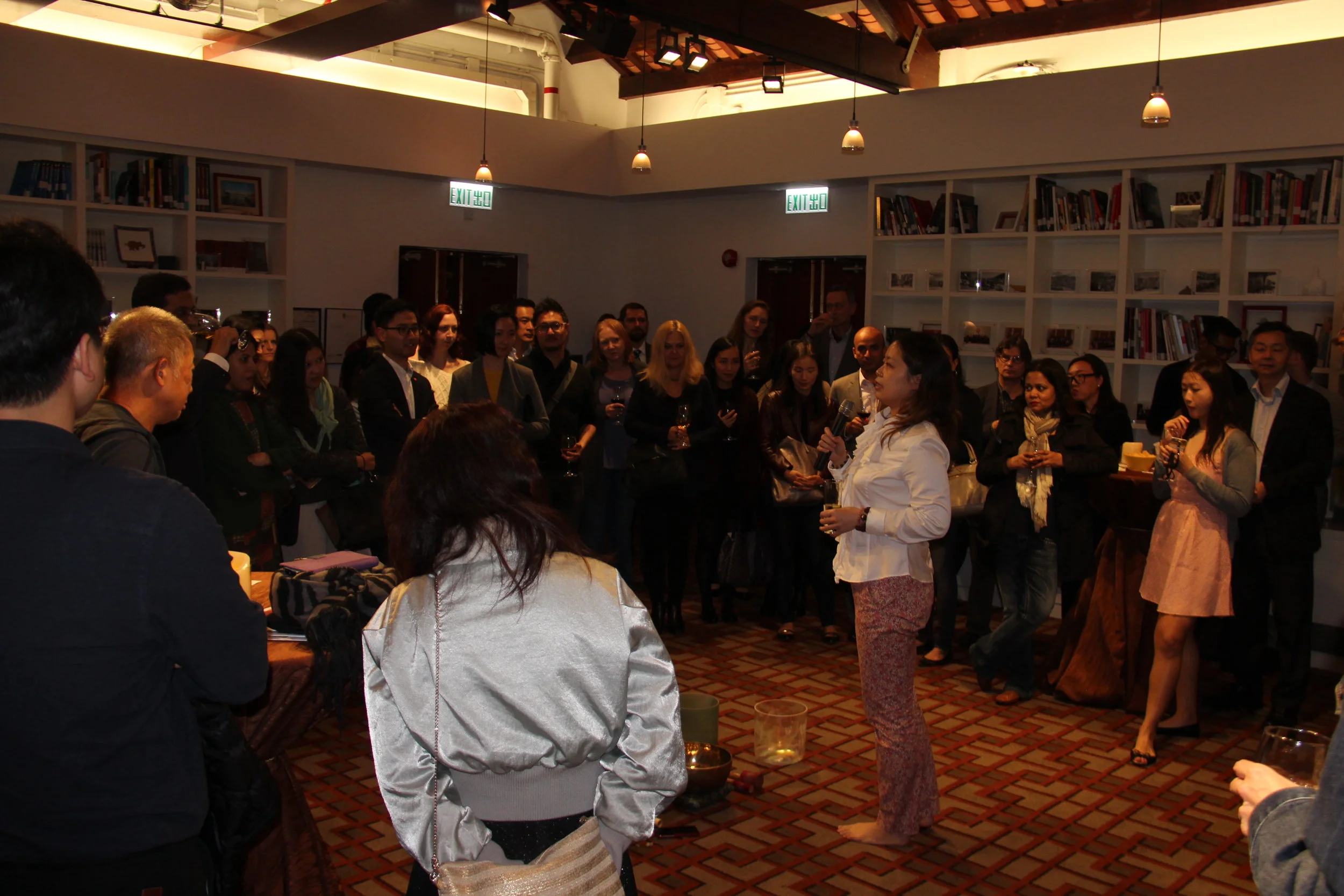
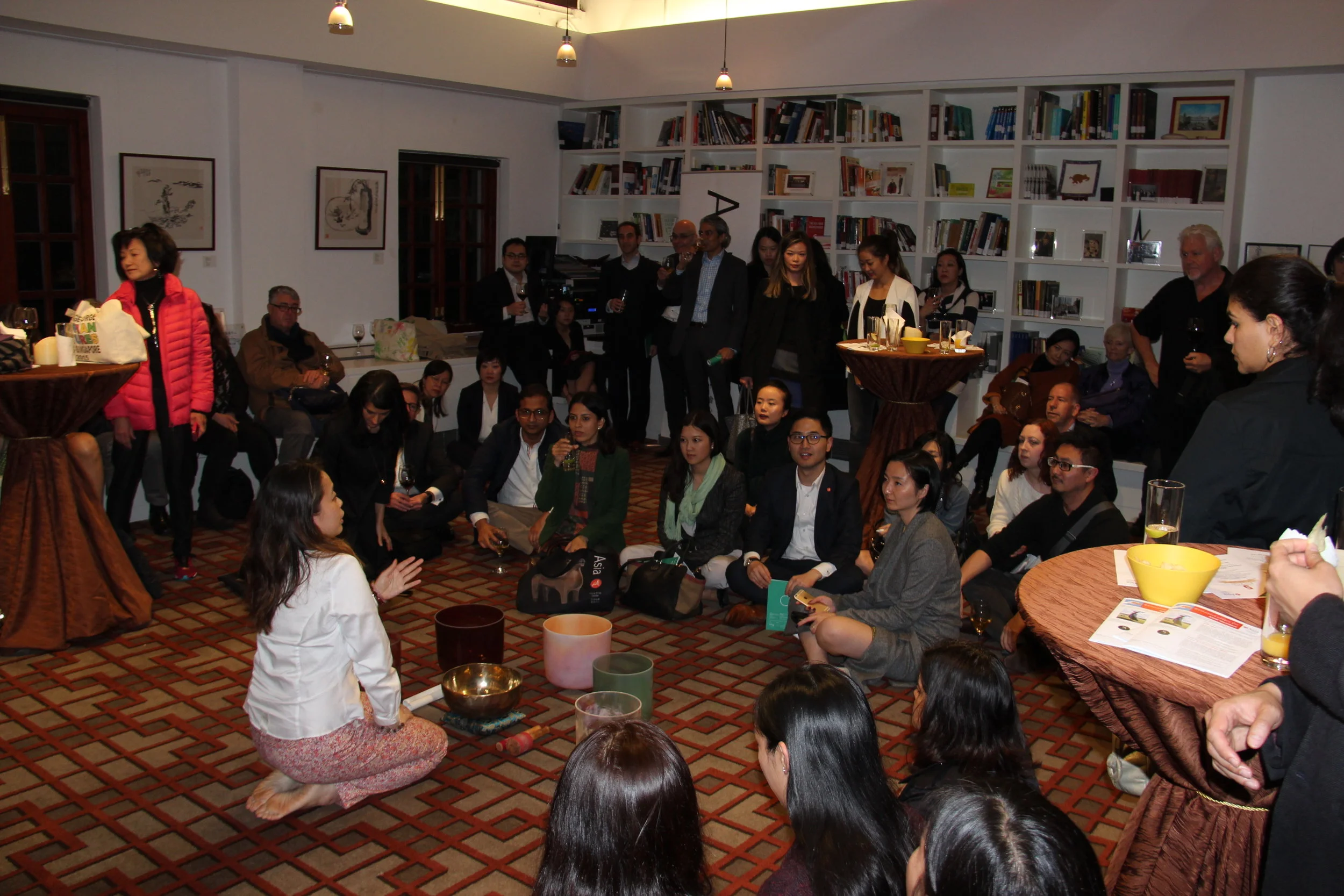
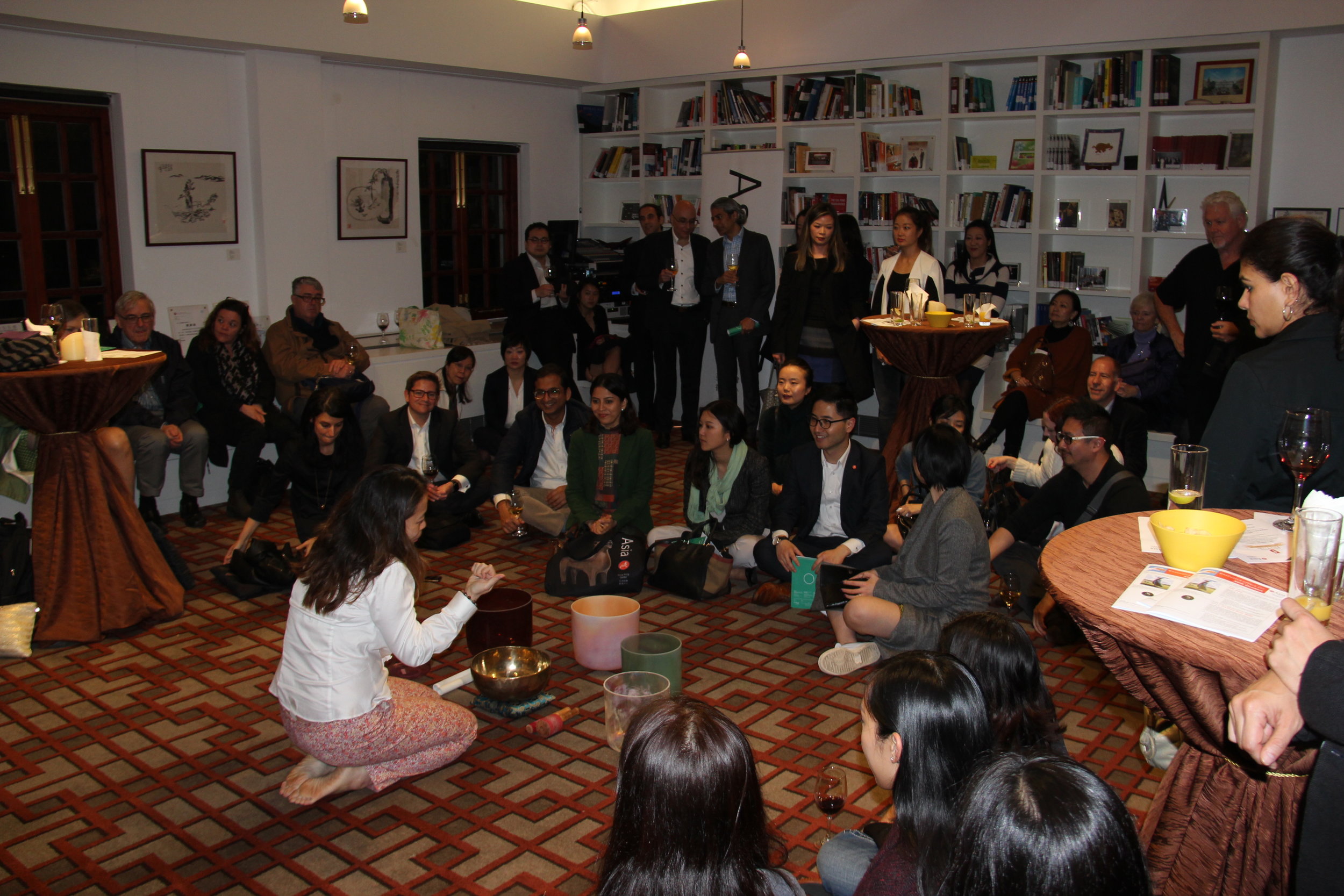
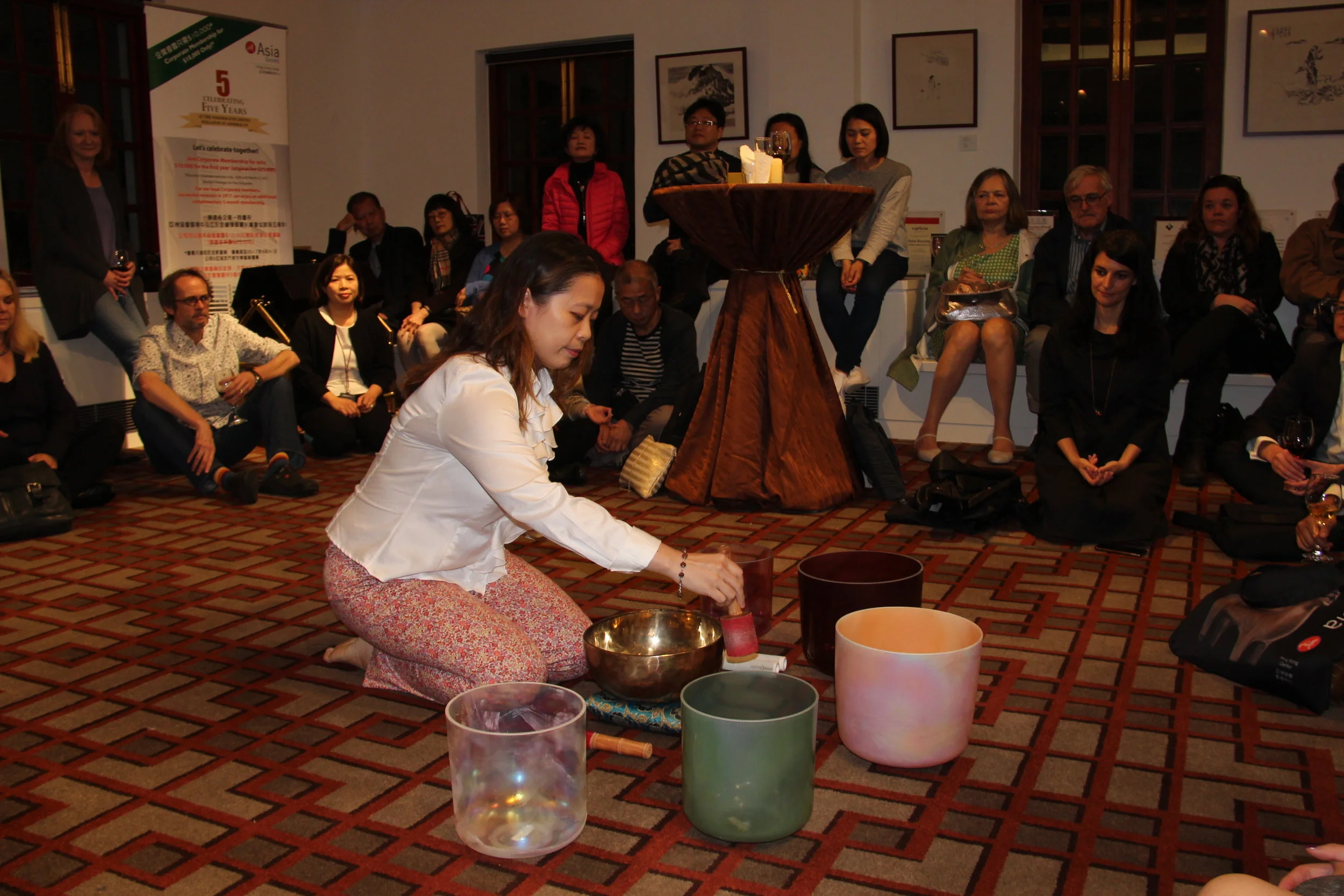
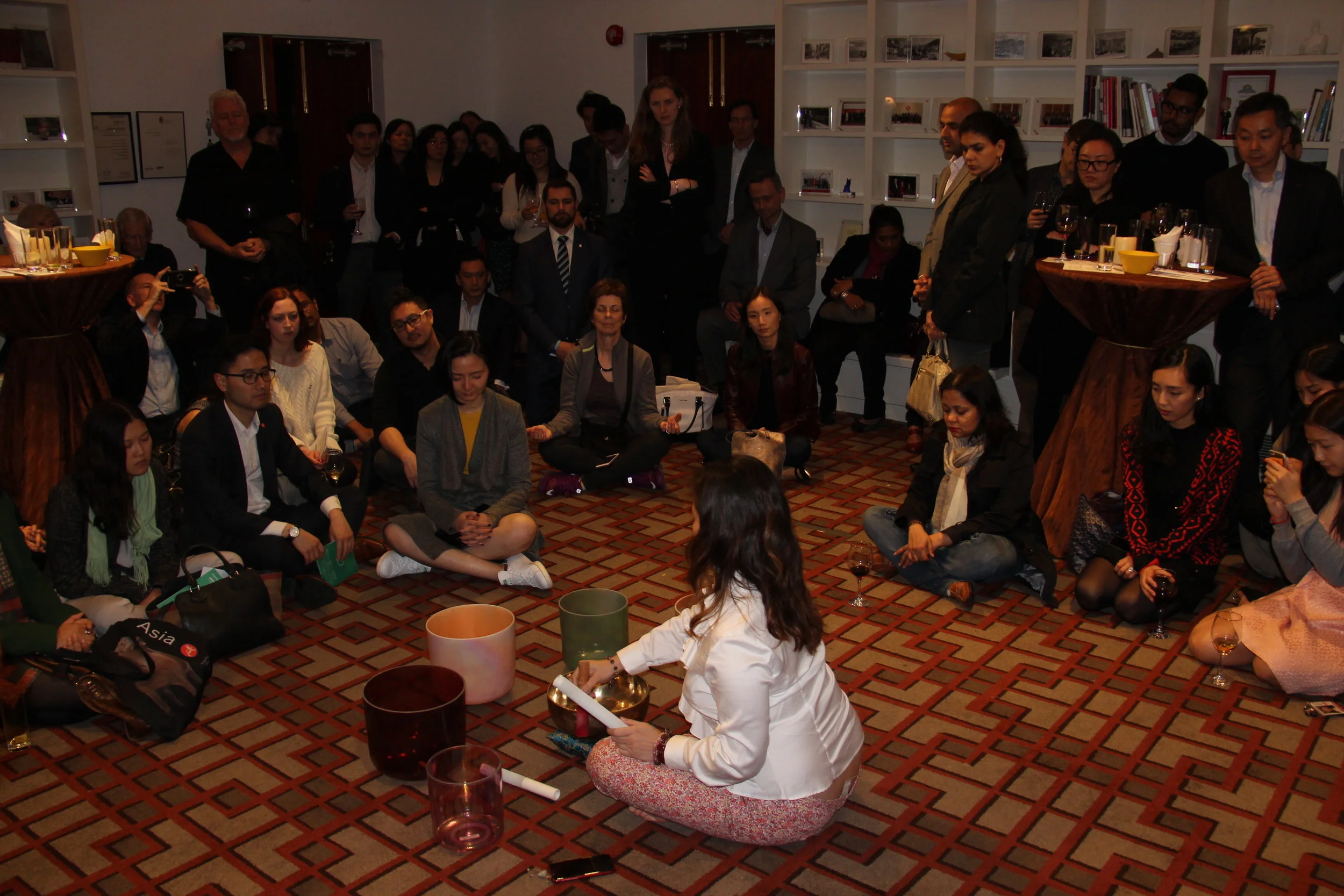





















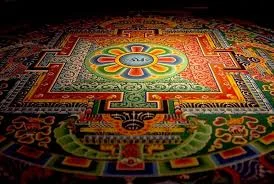

Authenticity and spiritual intelligence are co-related…